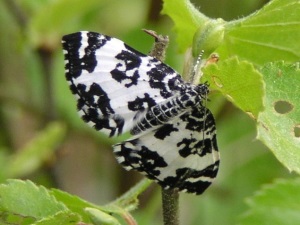Wildlife and Biodiversity
 Biodiversity is a word that means “the variety of living things”. It indicates not just the vast array of life but also it’s inter-connectedness. Protection of biodiversity is important for many reasons.
Biodiversity is a word that means “the variety of living things”. It indicates not just the vast array of life but also it’s inter-connectedness. Protection of biodiversity is important for many reasons.
- there is a moral argument for conserving that which exists for its own right;
- it provides us with what is known as ecosystem services - that is food, fresh air, clean water, insects that pollinate our crops, medicines and addresses climate change;
- it is known that a green and healthy environment is good for our own personal wellbeing, both physically and mentally.
We know we are losing our biodiversity with many species of animals and plants decreasing in the UK and across the world. It is becoming clear that only through co-ordinated policy and action will we halt these losses. It is now more important than ever that we conserve and enhance what remains.
We meet with the county council and all the Staffordshire district and borough councils monthly. This provides us with an opportunity to share best practice and to identify ways in which we can work together to deliver climate change and green recovery measures.
We want to make it clear that we are here to help wherever possible, we can even help with matters such as preventing the use of artificial turf across the Borough. We can’t restrict the use of artificial turf on private premises across the Borough, but we can encourage residents to lay live rather than artificial turf to help sustain ecological value. Through making these little changes and conserving what we have - we can make our Stafford Borough beautiful, clean, and sustainable.
Stafford Borough
Stafford Borough is a mainly rural area with a wide range of habitats that include many sites of local, national and some of international importance. There are three rivers, the Penk, Sow and Trent that eventually meet to the west of Stafford. In the northwest are the woodlands of Hanchurch and Bishop’s Wood. To the southeast is the heathland of Cannock Chase, designated an Area of Outstanding Natural Beauty. As part of the Meres and Mosses landscape, there are a variety of wetlands in the west of the borough such as Cop Mere, Loynton Moss and Aqualate Mere. To the east of Stafford is Chartley Moss, Britain’s largest example of Floating Bog. On the southern border of the Borough can be found Mottey Meadows, one of the best-preserved floodplain meadows in the country. In total there are 15 Special Sites of Scientific Interest (SSSI) two of which are National Nature Reserves. Additionally, there are many Sites of Biological Importance (SBI) that are of county significance.
Our aims and objectives
Our Aim
"To conserve and enhance the characteristic biodiversity of Stafford Borough for present and future generations.”
Our Objectives:
These relate to three key areas:
- Land Management - To halt the loss of biodiversity on our land and continue to reverse previous losses through targeted action for species and habitats enhancement
- Integration and Co-ordination - to develop an effective framework that
ensures biodiversity is considered in decision making in urban and rural environments - Awareness - To increase understanding and enjoyment of biodiversity and to engage more people in its conservation and enhancement
Stafford Borough Council in conjunction with its partners will work towards creating a greener borough, rich in wildlife for residents to enjoy, which will contribute to their prosperity, health and wellbeing.
Wildlife Sites in the Borough
- Local Nature Reserves (LNRs) - The Council manages eight LNRs across the borough and also assists with Stone Town Council’s 'Crown Meadow'. They are places that support a rich variety of wildlife and are important to local people, by enabling contact with the natural world. The reserves include examples of marsh, heath, reedbed, woodland and meadow. Many different plants, insects and animals live in these different habitats. Each site has its own five-year Management Plan
-
Sites of Biological Importance (SBIs) - In Stafford Borough there are 173 sites designated for their wildlife value known as SBIs. These sites have a wide variety of good quality habitats and a range of species of county importance. They provide the backbone to Stafford Borough’s rich natural environment.
There are many fascinating wildlife sites worth visiting in Stafford Borough.
Staffordshire Wildlife Trust manages a number of these nature reserves. These are:
- Doxey Marshes
- Loynton Moss
- Radford Meadows
- Allimore Green
- Pasturefields
- Jackson’s Coppice and Marsh
- The National Trust own and manage:
- Downs Banks
- Downs Banks
- Natural England manage three sites:
- Mottey Meadows
- Aqualate Mere
- Chartley Moss
They are all worth visiting and have great wildlife interest, though you will have to check with Natural England for access to their sites as access
is limited to certain days and formal events.
Further information can be found on the following relevant websites:
- Staffordshire Wildlife Trust - All Nature Reserves
- The National Trust - Downs Bank
- Natural England - West Midlands NNRs
Partnership Working and Community Involvement
We work with a variety of partners in undertaking conservation work in the Borough. These include Staffordshire Wildlife Trust, Natural England, The Environment Agency and Stafford College.
There are many ways in which people have a part to play in helping conserve biodiversity.
There are volunteering opportunities on many of the nature reserves in the Borough, including those owned by Staffordshire Wildlife Trust. In partnership with the Council, the Wildlife Trust also run the 'Wild about Stafford' volunteers - a monthly conservation work party.
